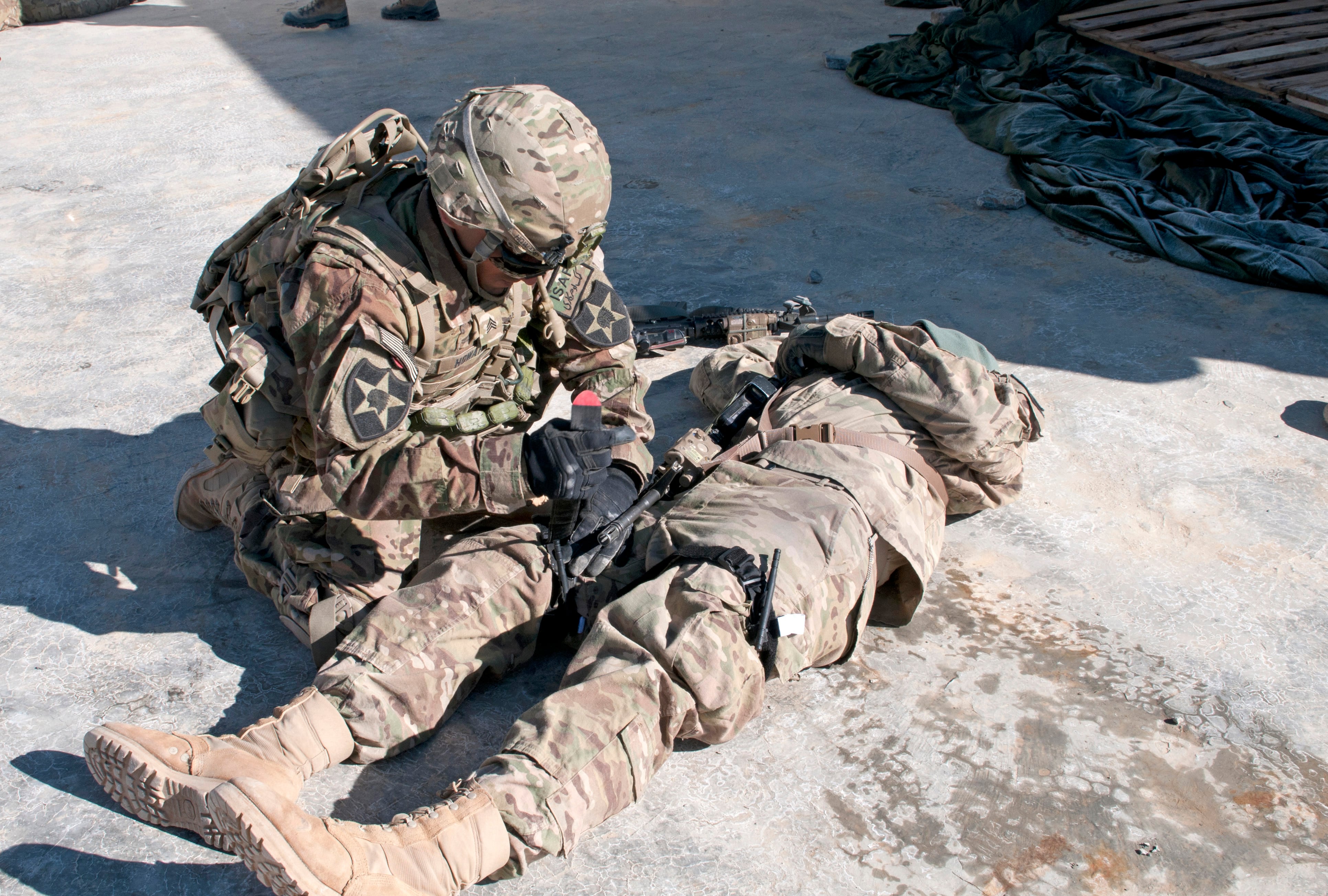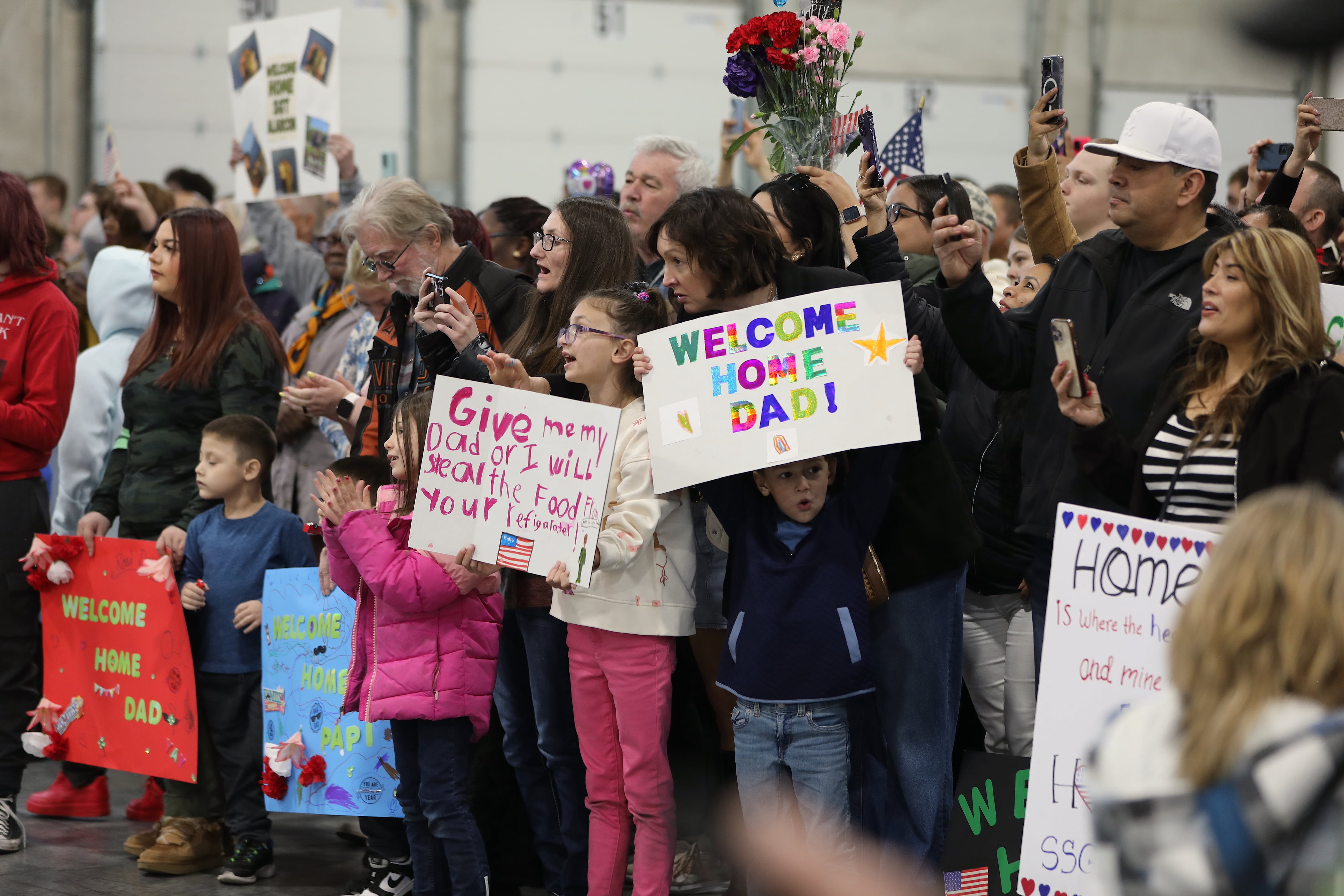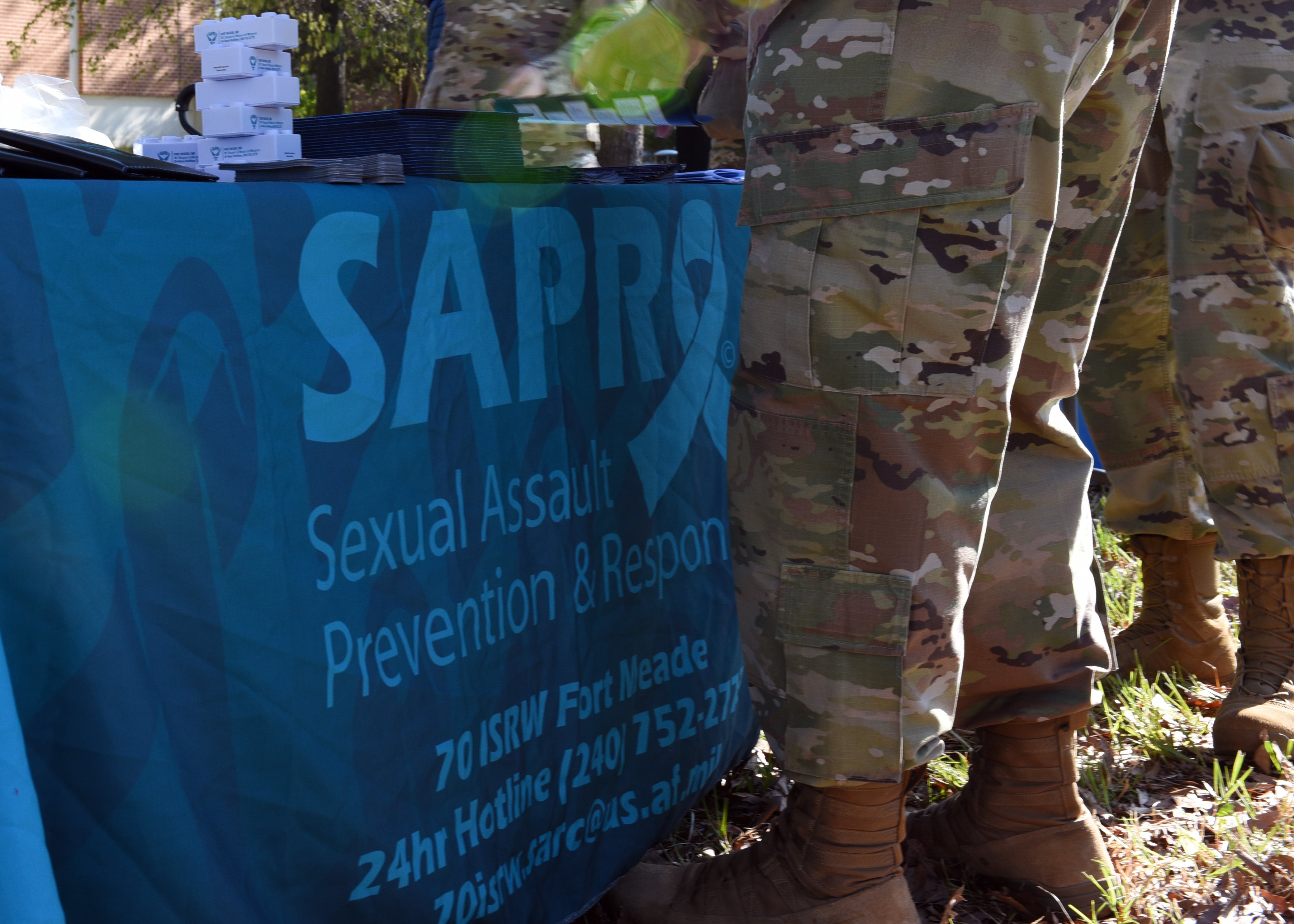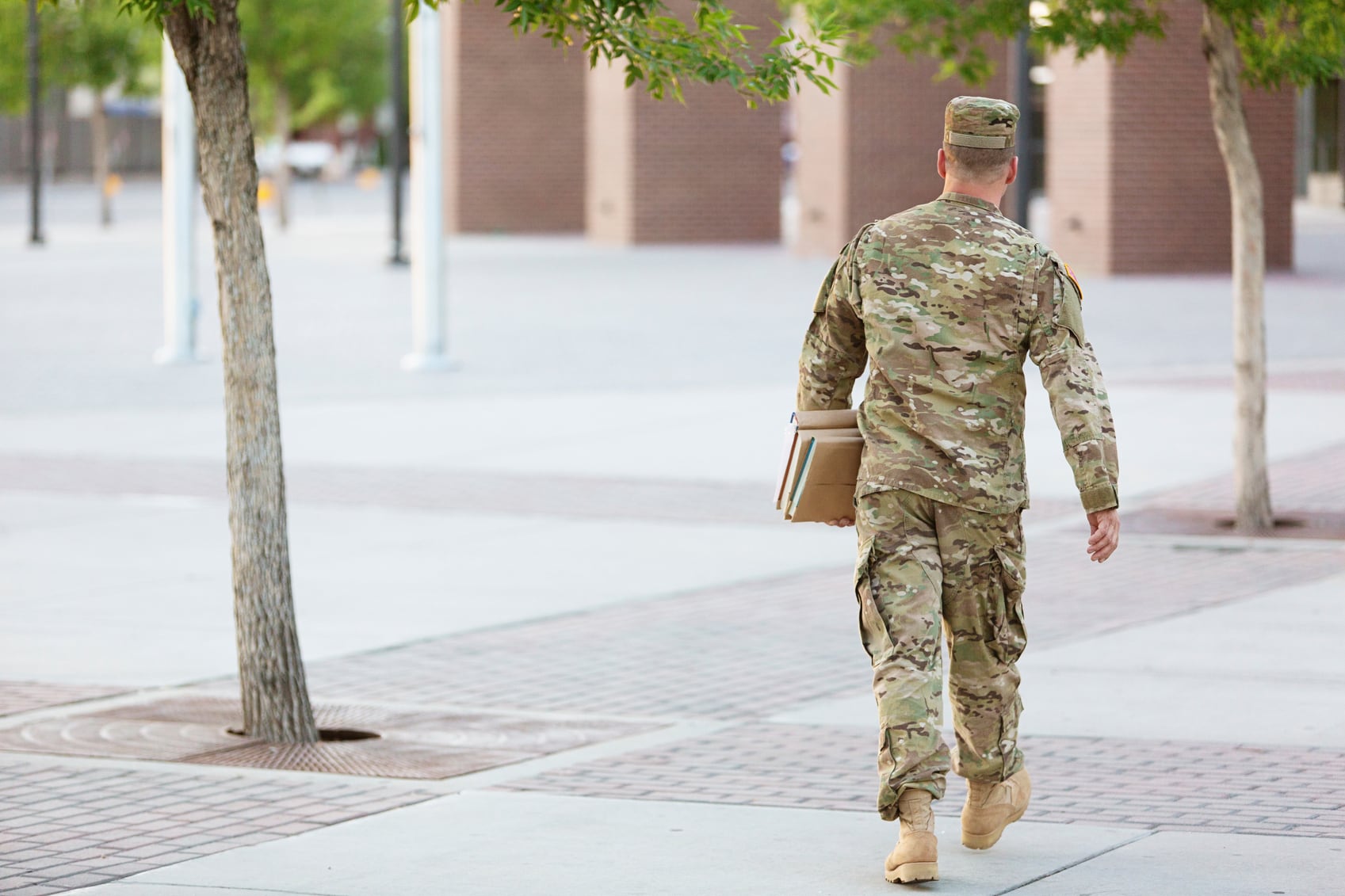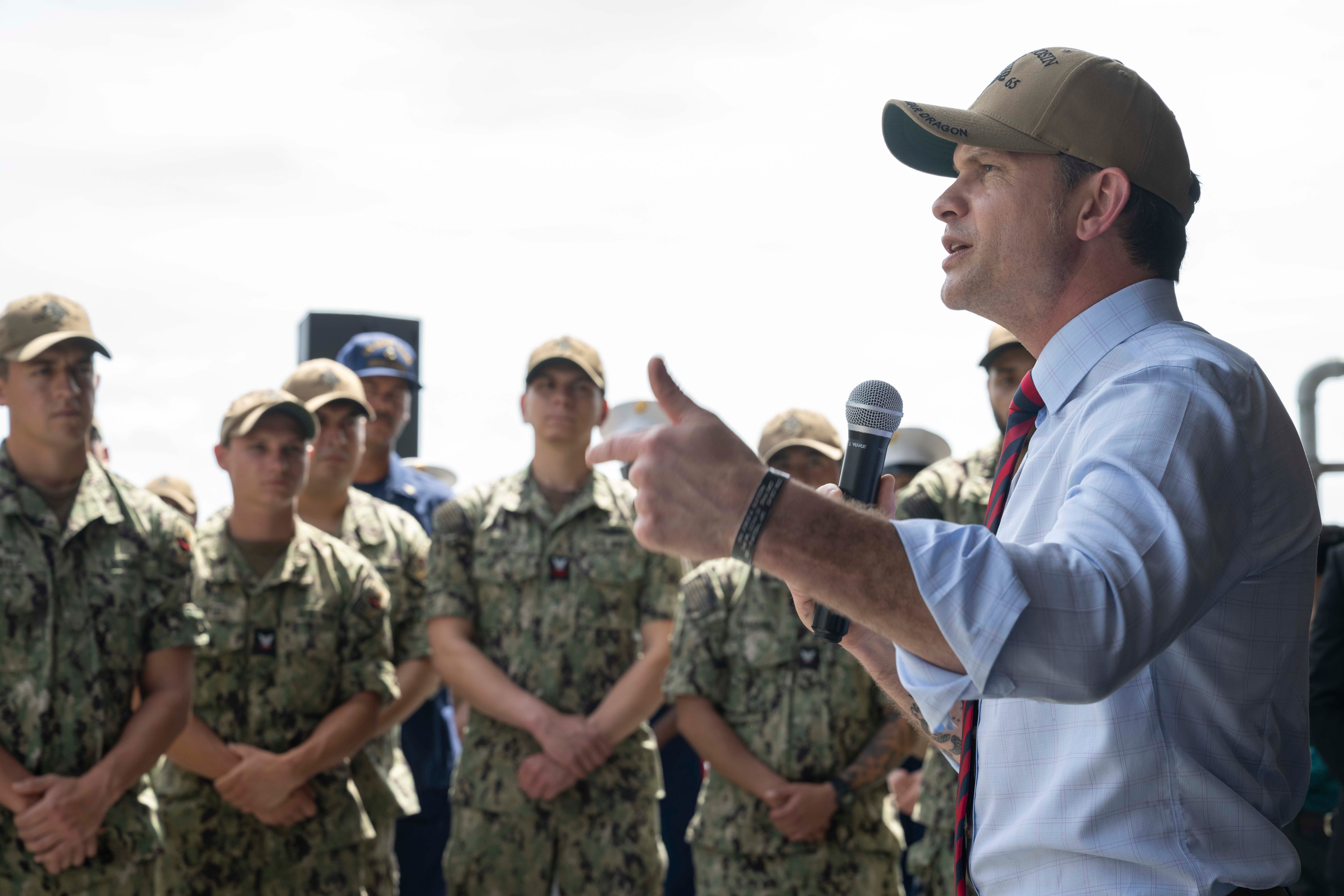WASHINGTON — Andrew Fisher thinks tourniquet training should be as common as CPR classes.
But first, the former battlefield medic has to convince people not to be afraid of them.
“We’ve heard if you use one you’re gonna lose your leg, you’re gonna die, you should only use it as a last resort,” Fisher said during a presentation to the Pat Tillman Foundation summit in July. “This is literally garbage. It is urban myth, and it has cost the lives of thousands of trauma victims.”
Fisher, an Army Ranger turned medical student at Texas A&M, has spent the last few years as a Tillman Scholar trying to bring combat medical lessons to a wider public audience as a volunteer with the Stop The Bleed campaign, launched by the Department of Homeland Security in 2015.
Now, in the wake of the deadly shooting in Las Vegas last weekend, the effort is getting renewed attention as a updated approach to basic first aid that all Americans should learn.
Emergency response to the shooting, which killed 58 and wounded more than 500 more, included a variety of bleeding control responses from both trained professionals and good samaritans.
But Fisher, an Army Guard major with eight overseas deployments, said too often the average American has had little to no exposure to basic training needed for trauma response and bleeding control, even though 12 million individuals annually receive CPR classes. Reliable medical tourniquet kits remain absent from many standard first-aid kits, and improvised tourniquets from belts are often poorly constructed and unhelpful.
“I feel like I sit on social media all day trying to correct this stuff,” Fisher said. “If we’re faced with this problem, let’s talk about how to properly do this.”
That starts with eliminating the stigma of using tourniquets to stop serious bleeds in the first place — “tourniquet-phobia,” as he calls it. For years, leaders in the medical community’s viewed them as a last resort, after all other blood control methods had failed.
The wars in Iraq and Afghanistan shifted that assumption. Trauma wounds from gunfire and explosives can cause an adult to die from blood loss in as little as three minutes, necessitating an immediate response to save lives.
Fisher said military research from the recent wars has not found any cases of tourniquets resulting in the loss of limbs due to cutting off the blood flow, and thousands of lives saved because of the quick response.
But military members do receive medical training in the use of tourniquets, and have proper equipment on hand. Fisher said transferring that to the wider public is the next key step.
Many public spaces already have automated external defibrillators available for heart-attack victims. Getting similar tourniquet kits to shopping malls, schools and public buildings would cost less and potentially help more individuals in an emergency.
“After that, the training is easy,” he said.
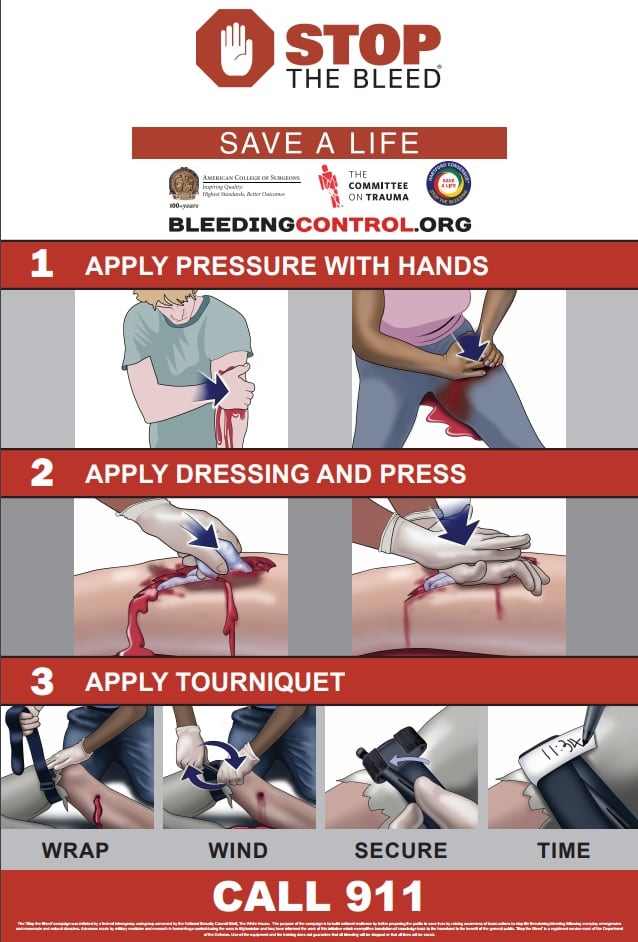
A simple first-aid class for average Americans — similar to CPR classes, but much shorter — could explain how to best use the devices, and how to best improvise one if none are available. The common idea of using a belt is among the worst ways to make a tourniquet, since it can’t be easily wound tighter to cut off blood flow.
While that knowledge would be critical during a disaster like the Las Vegas shooting, it could also be lifesaving in more common circumstances.
“The likelihood of being at a terrorist event is pretty small,” he said. “But you know what it’s going to be? It’s going be a car accident. It’s going to be something at work. It’s going to be something at home.”
More information on the campaign is available on the Stop the Bleed website.
Leo covers Congress, Veterans Affairs and the White House for Military Times. He has covered Washington, D.C. since 2004, focusing on military personnel and veterans policies. His work has earned numerous honors, including a 2009 Polk award, a 2010 National Headliner Award, the IAVA Leadership in Journalism award and the VFW News Media award.
